Between 2016 and 2019, the Government of Sudan (GoS), the UN Country Team, and the wider international community represented by the Durable Solutions Working Group (DSWG[1]) implemented a durable solutions profiling exercise in El Fasher, Sudan. Building on an evaluation and lessons learned of this pilot, a follow-up exercise has been initiated to scale up the approach to eight localities situated across five regions of Darfur, Sudan, for the implementation of the Peacebuilding Fund. Read on to learn more about this new exercise and how it will help inform durable solutions programming and local action plans in Sudan.
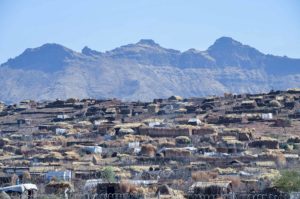
Photo of Jebel Marra at the IDP site situated near the Sortony UNAMID base, taken by Amy Martin, ©OCHA.
With 1.85 million people still internally displaced because of the conflict that broke out in Darfur in 2015, displacement dynamics are complex. Some IDPs go back and forth between their places of refuge and origin while seasonal migration is part of many communities’ traditional way of life. Many amongst the displaced live in camps that have come to resemble permanent settlements. Recognising the need to address the protracted displacement situation, a collaborative exercise supported by JIPS for measuring progress towards durable solutions was carried out in the town of El Fasher.
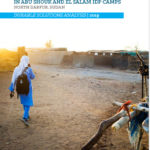
Comparing the situations of IDPs living in two camps to the situation of non-displaced residents living in peri-urban and urban areas, the exercise helped identify the displacement-specific vulnerabilities and barriers. It also shed light on the needs shared by both displaced and non-displaced communities, which linked to urban development challenges by highlighting areas for potential city-wide improvements. Overall, it marked an important step towards achieving durable solutions for IDPs. For the first time, the three major stakeholders – IDP communities, the GoS and the international community – came together and collectively took forward a process to find durable solutions for IDPs.
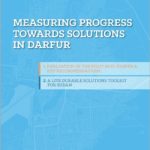
Looking back at the 2016-19 pilot in El Fasher, an evaluation was carried out to draw lessons learned and recommendations for the design of an adjusted durable solutions approach that could be applied to other localities within Darfur. Looking at the technical and process components of the profiling exercise, it found that adopting a multi-stakeholder and collaborative approach for a durable solutions study was paramount and proved crucial in El Fasher. Despite being a time-consuming process, collaboration and inclusiveness created a consensus around the methodology, tools and results, which is necessary when it comes to turn research into action.
“Everyone had their own data and was implementing interventions without coordination. It was therefore important that the durable solutions tool was developed jointly and collaboratively.[…] it is really important that we collectively shape a tool that everyone will use the outcome of” – UN representative, quoted in Measuring Progress Towards Solutions in Darfur
The new exercise contributes to the implementation of the Peacebuilding Fund (PBF), and specifically its key outcome pillar on durable solutions. The fund was launched in 2019 to support the Government of Sudan in addressing the root causes and drivers of the conflict (e.g. land issues) and in ensuring the rule of law and the provision of basic services. The DSWG is tasked to coordinate and oversee efforts in the area of durable solutions, including ensuring that the evidence created supports the humanitarian-development-peace nexus and that information is properly shared amongst all stakeholders.
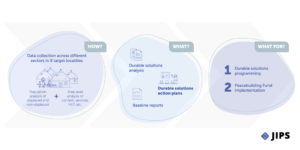
Data will be collected using quantitative and qualitative methods. The resulting evidence and analysis will namely inform local action plans.
The exercise comprises:
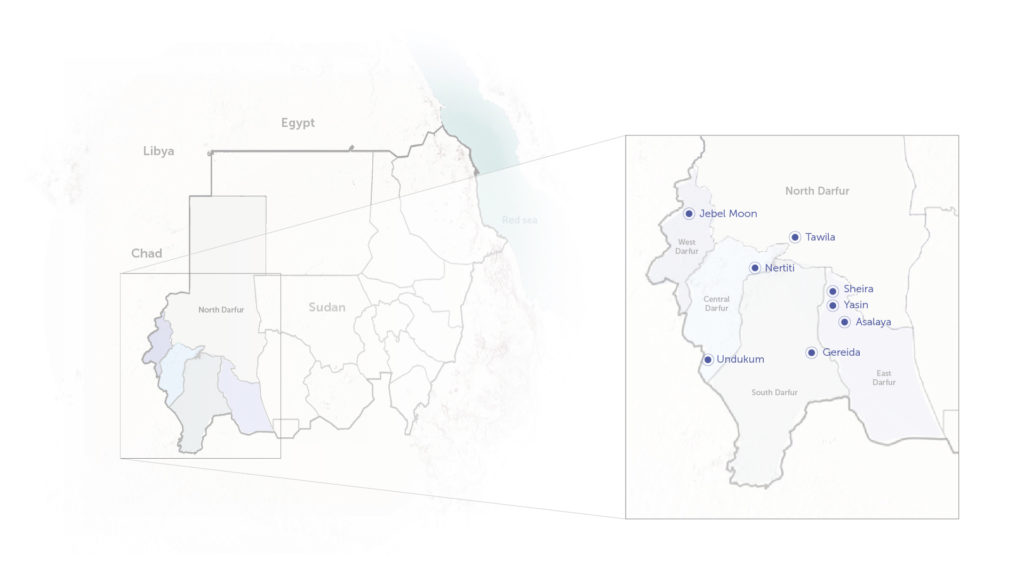
The exercise will look at eight localities, which have been prioritised by partners across Darfur, Sudan.
The International Organization for Migration (IOM) will be in charge of carrying out the household surveys in all localities while the data collection at the village level will be conducted by the Sudanese Development Initiative (SUDIA). JIPS is providing technical and process support to the DSWG throughout the exercise, with a specific focus on the design of the methodology and tools, training, joint analysis of results, development of local action plans, and engagement of affected communities in the process.
While the ongoing COVID-19 pandemic has slowed the process down, partners have continued to move the exercise forward. A working group was created to oversee the exercise, including focal points from each organisation involved. The Peacebuilding Fund partners have selected the target localities in consultations with local authorities. The DSWG together with JIPS have developed the indicator list and analysis plan based on the Peacebuilding Fund Results Framework, the El Fasher pilot exercise and evaluation thereof, as well as the Interagency Durable Solutions Indicator Library.
Currently the data collection tools for the household survey and the area-level data collection are being drafted with several rounds of review by the DSWG. The tools will subsequently be translated and tested. In parallel, the DSWG is consolidating all population estimates available, in order to inform the sampling approach. Once these components are ready, the process will move into training enumerators, piloting the tools, and collecting the data, which is scheduled to begin in October 2020.
For more on the pilot in El Fasher, read our previous article or take a look at the interactive story map.
—–
[1] Including UNDP, IOM, UNHCR, WFP, UNICEF, OCHA, UN-Habitat, INGO Steering Committee and donors.